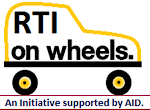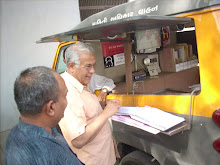Economic Times: New Delhi: Sunday,
August 21, 2016.
The Digital
India initiative may be aiming to make all government services electronically
available, but a recent study has found 10 government websites in Delhi lacking
in several transparency parameters.
The study,
published in Delhi Citizen's Handbook 2016, audited the websites against
predefined parameters of Section 4 of Right to Information (RTI) Act that sets
guidelines for proactive disclosure of information by government agencies
without the public having filed RTI queries. Nine out of the 10 websites could
not even meet 60% of the compliance points, said the study, conducted by Centre
for Civil Society.
Delhi Jal
Board (DJB) has outperformed all others with its website satisfying 81% of the
parameters. It is the only agency with a nodal RTI officer who coordinates and
facilitates the flow of information. But the website, which received praise for
its design, doesn't have contact details of the public information officers. In
fact, contact details of PIOs seem to be closely guarded secrets in almost all
cases, with Delhi Commission for Women (DCW) and NDMC's education department
being the only exceptions.
Two Delhi
government agencies Delhi Transport Corporation (DTC) and vigilance department are
found to be the worst performers. At 31%, the DTC website is the worst
performer with incorrectly labelled and outdated information, and a poor layout
making it difficult to access.
Researchers
also carried out a comparison of the education and health departments of the
three corporations (MCD), NDMC and Delhi government. In both cases, MCD turns
out to be the worst compliant authority. "Incorrect labelling makes it
extremely difficult to navigate through the websites," the study pointed
out. The IT departments in the civic bodies have always drawn flak for shoddy
performance. While many people-friendly IT projects have failed to take off in
the past few years, even the basic details of the councillors are usually
wrong.
Contrary to
the spirit of RTI Act essential to attain the lofty goals of good governance,
the departments were found to be blaming each other rather complying with
Section 4. The study identified the ambiguity in the wording of Section 4 as
the root of the problem. "The ambiguity allows public bodies room for
interpretation on what information is to be disclosed. Lack of provision regarding
regular updating is leading to variation in frequency of updates," the
report said.
To improve
accessibility, researchers recommended reworking of Section 4 to incorporate
clearer wording and addition of a clearly defined penalty in case of
non-compliance. Citing the best practices from the US, they also suggested a
regular audit by a third party to ensure strict compliance.














































































